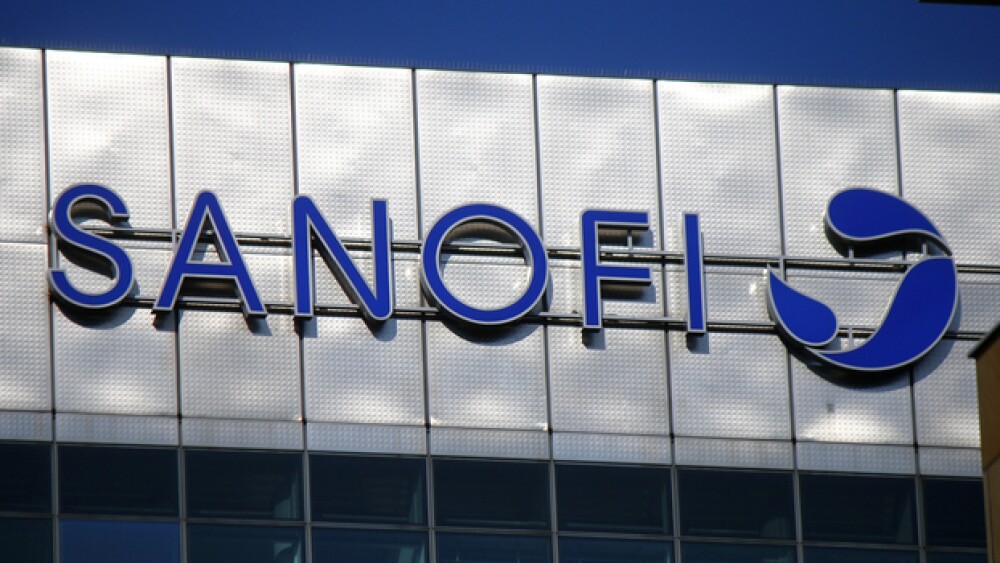“Our alliance with Sanofi Genzyme has been foundational for Voyager as we optimized the development of capsids, transgenes and gene therapy delivery,” stated Andre Turenne, president and chief executive officer of Voyager. “We look forward to this new stage of the relationship and to advancing our programs and research efforts for patients with severe neurological diseases.”
360b / Shutterstock
Voyager Therapeutics, headquartered in Cambridge, Mass., restructured its gene therapy relationship with Sanofi Genzyme. Under the terms of the deal, Voyager gets back worldwide rights to its gene therapy, VY-HTT01, for Huntington’s disease, as well as all rights outside the U.S. to its VY-FXN01 program for Friedreich’s ataxia.
Voyager indicated that the VY-FXN01 ex-U.S. rights have been transferred from Voyager to Neurocrine Biosciences under a deal the two companies inked in January 2019. Also, Sanofi Genzyme picks up an exclusive option right to choose novel AAV capsids owned or controlled by Voyager for exclusive use for up to two non-central nervous system (non-CNS) indications.
As part of the restructuring, Voyager is paying Sanofi Genzyme $10 million upfront, which is partially offset by $5 million from Neurocrine to Voyager over the VY-FXN01 rights shift. Voyager will also pay another $10 million in milestones to Sanofi Genzyme once it files an investigational new drug (IND) application for VY-HTT01 or, if it applies, to some backup compounds for Huntington’s disease.
Voyager is currently conducting preclinical studies of VY-HTT01, with hopes of a potential IND filing later this year.
“Our alliance with Sanofi Genzyme has been foundational for Voyager as we optimized the development of capsids, transgenes and gene therapy delivery,” stated Andre Turenne, president and chief executive officer of Voyager. “We look forward to this new stage of the relationship and to advancing our programs and research efforts for patients with severe neurological diseases.”
As a result of the restructuring and related to its focus on the now wholly owned Huntington’s program, as well as new discovery efforts, Voyager is on the market for a partner for its preclinical program for SOD1 ALS. It no longer plans to file an IND for VY-SOD102 this year. This is a program for amyotrophic lateral sclerosis (ALS).
“We are now committed to discovery and developing life-changing therapies for patients suffering from severe neurological diseases,” stated Omar Khwaja, Voyager’s chief medical officer. “Concentrating our efforts on HD and other promising new neurological targets will enhance our ability to achieve our maximum impact.”
The original deal with Sanofi Genzyme was signed in 2015. It was revised to restate a separate agreement that focuses on the discovery and development of novel AAV capsids for other Sanofi Genzyme programs.
Additional programs that ended between Voyager and Sanofi include Sanofi Genzyme’s option to acquire rights to a future Voyager CNS orphan program and a spinal muscular atrophy (SMA) program, where the intellectual property rights are returned or exclusively licensed to Sanofi Genzyme.
On May 1, Voyager and Neurocrine announced Phase I clinical trial results for VY-AADC from eight patients with Parkinson’s disease. The results were presented at the 2019 American Academy of Neurology (AAN) Annual Meeting. Treatment with the therapy improved good ON time by 1.7 hours from baseline and decreased OFF time by 2.2 hours at 12 months from baseline.
“The results from this Phase I trial in patients with Parkinson’s disease provide further evidence that VY-AADC administration can allow neurons in the brain to convert levodopa to dopamine and improve motor function,” stated Eiry Roberts, Neurocrine’s chief medical officer. “The results from this trial confirm previous data from separate, ongoing Phase I study demonstrating that increased coverage of the putamen with VY-AADC leads to an increase in AADC enzyme activity and improvements in motor function and quality of life in patients with Parkinson’s disease—with less need for oral levodopa medication.”
Standard treatment for Parkinson’s is levodopa. It is converted into dopamine. However, as the disease progresses for most people, levodopa doesn’t work as well at controlling the symptoms, with levodopa wearing off more and more quickly, which causes a drug on-off phenomenon. The ON phase is when the drug works and symptoms are better, whereas the OFF phase is when the drug’s effects are no longer working and symptoms are occurring.
VY-AADC is a gene therapy that puts the AADC enzyme into brain cells, where it can convert levodopa to dopamine.





